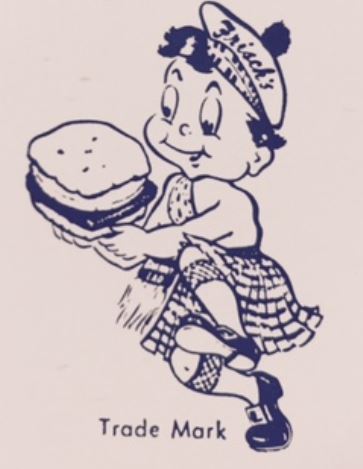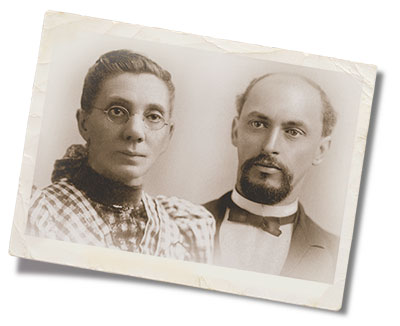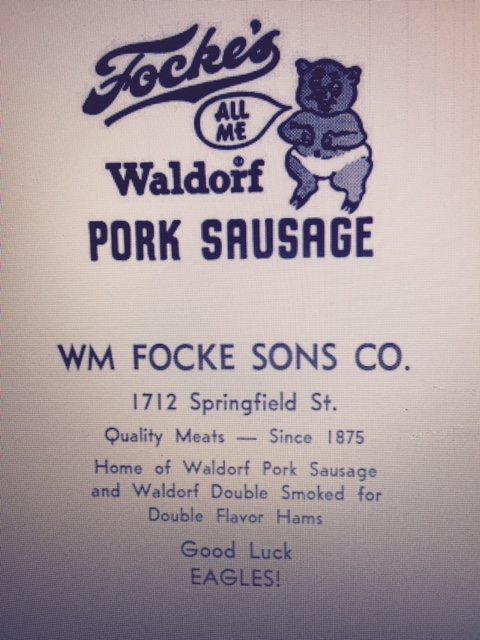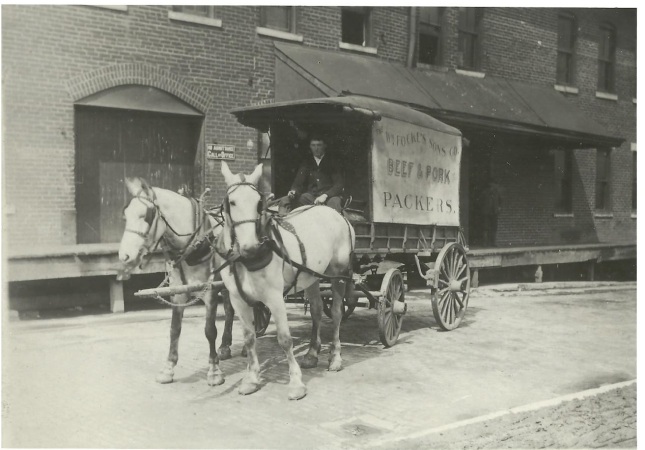ll 
“My mother was a Minella,” says a large guy at the doorway to the two eighty year old men taking tickets. “Well, we won’t hold that against you!” laughs one of the snarky ticket takers. They add commentary to everyone walking in the door and ask the ladies helping serve salads, what glass of wine they’re on.
Less than 10 minutes later in walks none other than Buddy LaRosa. He gives a warm Italian hug to the quieter ticket taker, Donald, and gives him a firm man-kiss on the cheek. It’s not long before he’s making his rounds, holding court as the Pizza King of Cincinnati. But here, at the undercroft of San Antonio Church in Cincinnati’s South Fairmount, our Little Italy, Buddy LaRosa is just another cousin.

Buddy LaRosa holding court at the San Antonio pizza dinner.
Buddy’s a regal old man – about five foot five if he’s in dress shoes – with his silver hair slicked back, wearing an embroidered untucked white shirt. He’s a Don, a Godfather, a food legend. Although he grew up in Little Italy, his mother sent him halfway across town to Roger Bacon high school, my alma mater, to be educated by the Franciscans, the patrons of Italy.
His maternal Aunt Dena was a Minella too. She was the one he got the sweet San Marzano marinara sauce recipe from which he used to open Papa Gino’s Pizza, which would become the ubiquitous 67 location LaRosa’s Pizza powerhouse. Aunt Dena was also one of the original San Antonio ‘Lot Ladies’, the women of the parish who would serve Cincinnati’s original 1938 pizza pie recipe from the lot of their church at the summer festival. The non-Italians who came to the festival back then to hit on the gorgeous dark-haired Italian girls, mistook the pizza for strawberry shortcake. Can you imagine a time when people had not yet heard of pizza?
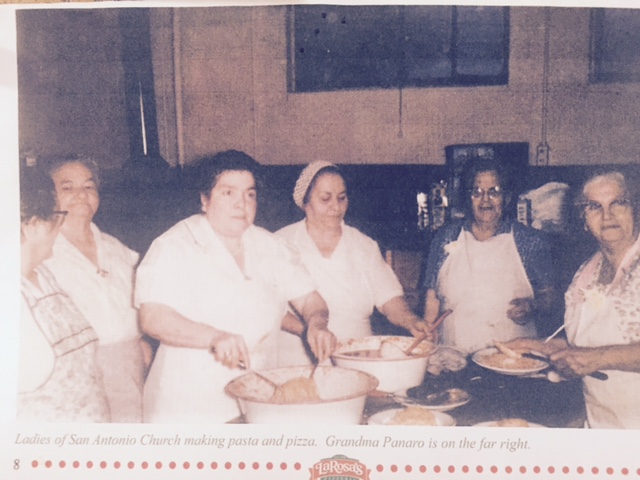
This is the recipe they’re serving tonight, along with the more American and familiar recipe with sauce and grated provolone cheese. The original recipe comes with sweet sun roasted San Marzano sauce and finely grated Romano cheese, as pizza originally came. Our American palates later smothered it in melty provolone and mozzarella cheese. The original pizza reminds me of the heavy pizza my grandmother would make for us kids when they watched us. It was heavy on the sauce, and light on the cheese, and Grandma would load hers with a mass of sautéed onions. But she was Polish, not Italian. She and Grandpa pronounced it pizza pie with the two zz’s not “pitza.”

San Antonio Original 1938 Recipe Pizza Pie with meat (the original didn’t have meat)
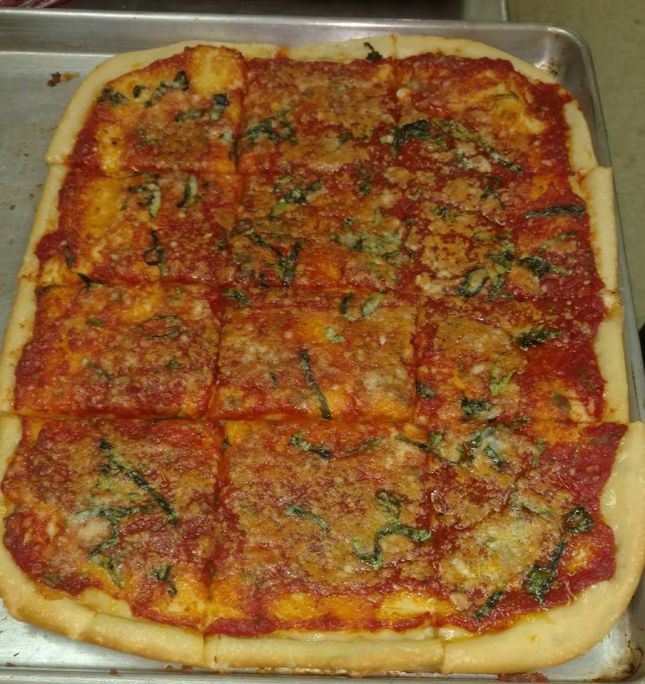
Original Ladies of the Lot Pizza – hand stretched crust with simple sauce of tomatoes, sea salt, olive oil, basil, and garlic, with pecorino cheese, fresh basil strips, and “blessed” by the ladies with a sprinkle of olive oil (although the festival pizza is made by the men these days)
Standing at the door waiting for my carryout from the annual San Antonio Original Cincinnati Pizza Dinner, I have a rare glimpse into Cincinnati’s Little Italy – or what’s left of it. There are Carmellas and Salvatores in the crowd in this tightly packed undercroft beneath Cincinnati’s second oldest Italian Catholic Church. You can only eat in, if you’ve purchased your tickets ahead of time. The tables have reserved placards with names like Panaro, Minella, and others. I’m competing with the large crowd of hungry parishioners for my carry out pizza, but the ladies have given me a complimentary glass of Paisano red wine while I wait, and a lesson in Little Italy’s history.

In the early 1900s to the 1960s, this neighborhood was a thriving concentration of Italian immigrants, many from the Salerno region, like Buddy LaRosa’s maternal family, near the beautiful Amalfi Coast of Italy. The hills of Little Italy in Fairmount were covered in vegetable gardens and vineyards, as these immigrants tried to re-create their hilly Italian villages in Germanic Cheencheenati.
Salerno is where the sweet San Marzano tomato is native, and where the in the bay, the native Salernan aliche or anchovy swim in abundance. They were used as a prized ingredient on the original Little Italy home pizzas as well, according to Donald’s partner in crime, the louder of the two ticket takers. He relayed a story that as a kid his mother would say she was making pizza with aliche. He would say “I’m not eating pizza with leeches.” It took years to clear up that confusion.
This Italian parish still holds mass in the small 1922 church above where the pizza is being eaten in mass quantity. They do not have a pastor, but many of Cincinnati’s retired priests love coming to the parish committed to keeping their Italian heritage alive. Even the older members are second or third generation immigrants, and few still speak Italian. They no longer parade the statue of Mary they call Maria di Constantinopoli Felitto along Queen City and the side streets of Little Italy, like the did in the early days, and as they did in the Old Country, where the statue was made and carried to Cincinnati.
They do venerate the local hero, Sr. Blandina, an Italian immigrant Sister of Charity, who helped start the parish and is now up for sainthood. She unfortunately preceded the 1938 Lot Lady pizza, but the parish is eating pizza in her honor. The banner of the parish’s Holy Name Society also adorns the walls, along with numerous historic photos of the parish through the years.
I’m enjoying my glass of wine and being heckled by the snarky ticket takers, and have the honor of tasting Cincinnati’s original pizza pie.






